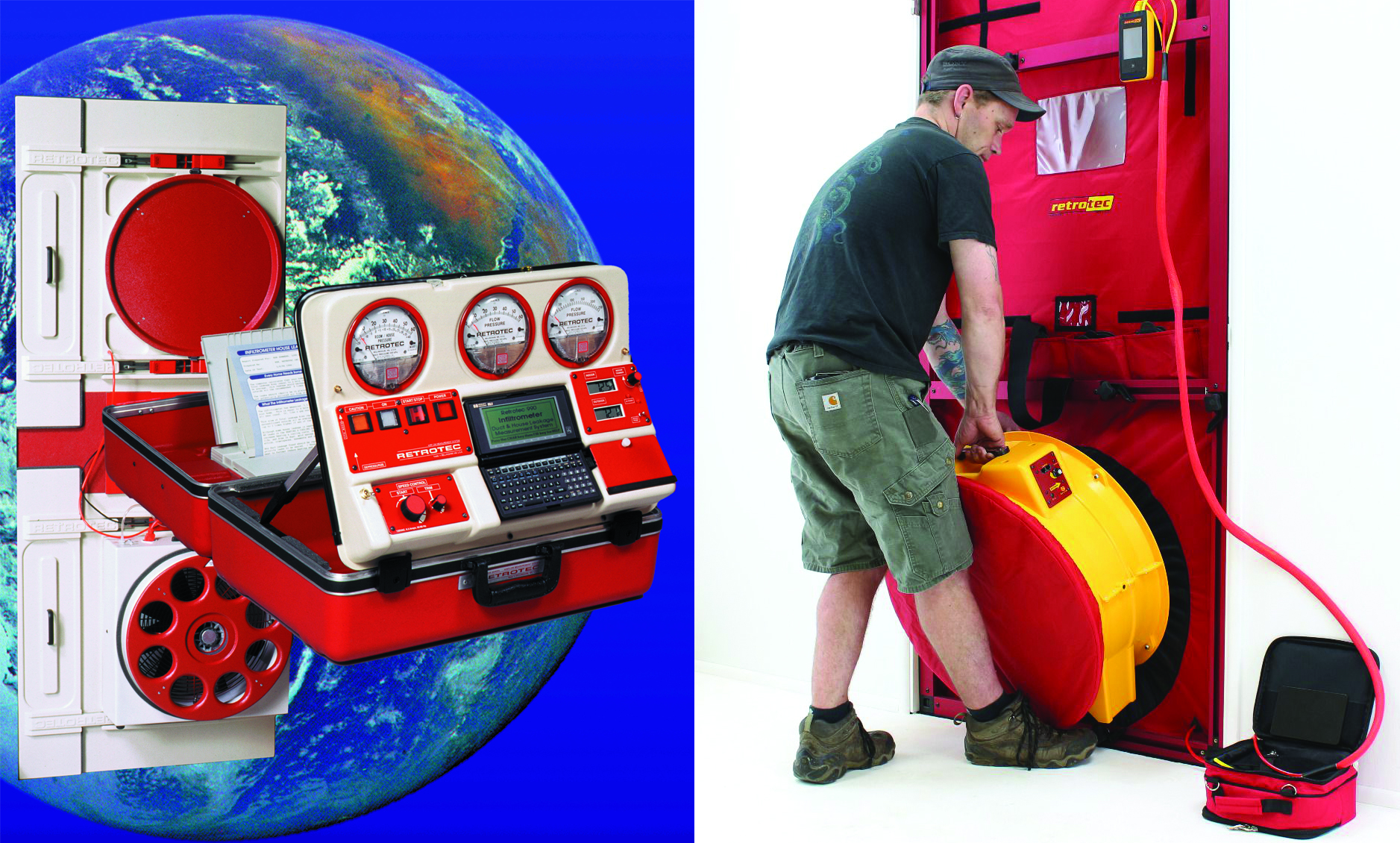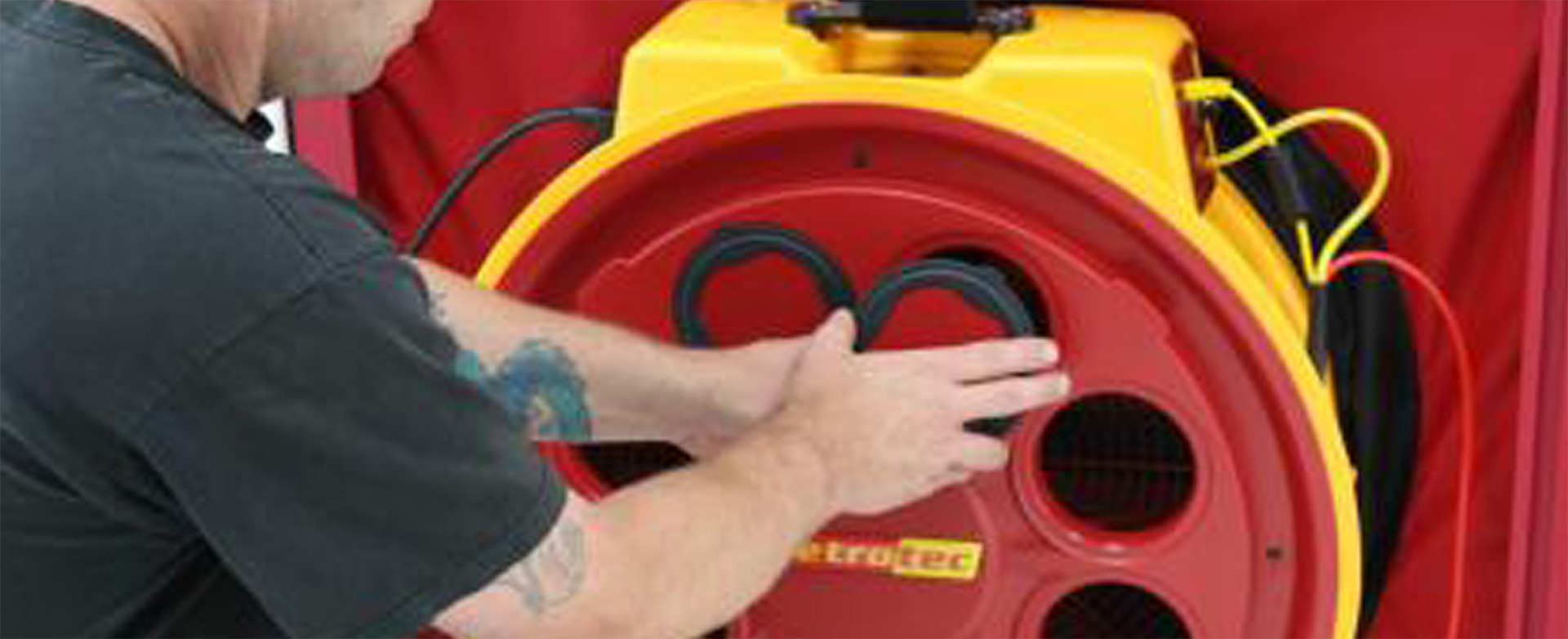A Brief History of Retrotec’s Involvement with Home Performance
 In 1980 I calibrated the fledgling Retrotec Energy Innovations Ltd.’s blower door at the National Research Council (NRC) in Ottawa, Canada. It used RPM and pressure drop to crudely measure flow. Little did I know that what I learned from the head air flow scientist at NRC would result in a 38-year long career making Retrotec the largest calibrated door fan manufacturer in the World.
In 1980 I calibrated the fledgling Retrotec Energy Innovations Ltd.’s blower door at the National Research Council (NRC) in Ottawa, Canada. It used RPM and pressure drop to crudely measure flow. Little did I know that what I learned from the head air flow scientist at NRC would result in a 38-year long career making Retrotec the largest calibrated door fan manufacturer in the World.
Retrotec stands for retrofit technology, which means fixing houses after they’re built. Our first blower doors were designed to perform energy audits on these houses using their in-house energy analysis software based on HOT2000. It ran on a 32k pocket computer. Currently known as Home Performance (HP), this application was promoted by Retrotec as a non- government funded business opportunity. Eventually this resulted in the HP application being spun off as The Comfort Institute which was later absorbed by AeroSeal.
Retrotec continued to manufacture Blower Doors for all applications. Instead of focusing on the best-looking equipment for HP applications, we also created lower cost blower doors to compete in government sponsored applications such as Weatherization and Code Compliance.
Our HP training courses would take contractors to new home construction sites to show them the features that were being built in that would cause massive energy and health problems upon completion. Even though it would only cost a few $100 to fix these problems during construction, we will have to wait for many years and many $1000s wasted before these homes get fixed. If ever. 2015 IECC Code Compliance for enclosure and duct leakage would go a long way to better performance but in most states, Codes are poorly enforced even when enacted. HP could be the next big business opportunity when we realize that our current cheap energy should not be thrown away needlessly. Increasingly, we are gathering evidence that the increased health cost alone of improperly tested buildings could easily exceed the cost of fixing them. Consider that one third of all US homes have at least one person with a serious health condition such as allergies and/or Asthma that can be directly linked to the performance of their home.
The Home Performance/Utility Relationship
Power created by solar and wind have come down by a factor of 10 and 100 respectively since 1980. Power plants are now being built, all in for costs of less than 2 cents per kwh hour delivered. About the same as gas plants but without the pollution from their production and without the CO2 from combustion and much lower than nuclear and new coal plants. 80% of the new power installed in Texas was renewable last year. The future is clear that the fossil fuels day is done and the disruptor is renewables with battery backup. This could create a new opportunity for super efficient houses since utilities will increasingly become local on a smaller scale where the power saved during times of peak load such at 3 to 6 PM in summer, will have so much value that it can be sold to other parts of the grid.
The largest utilities will become those that add solar to houses with battery backup. The installers own the power and sell it back to the homeowner at lower rates than conventional utilities so they can sell the excess to other parts of the grid. The more those houses reduce their peak load, the more the new solar utility can sell back to the grid at peak rates. The more power those houses can store, the more the solar utility can get paid to absorb power when rates go negative because of over supply. Houses could get power for free while the solar utility gets paid to take it away.
Our future will brighten as cheaper renewables take over and as fossil fuel companies get sued for misleading people about climate change and for covering up the damage done by fossil fuels to our health
About the Author, Colin Genge
 Colin Genge is the founder of Retrotec. Recently retired after decades of service in the organization, he’s widely regarded as one of the world’s foremost experts on the science and practice of measuring the integrity of air barriers in buildings for home performance, fire control, and clean room applications.
Colin Genge is the founder of Retrotec. Recently retired after decades of service in the organization, he’s widely regarded as one of the world’s foremost experts on the science and practice of measuring the integrity of air barriers in buildings for home performance, fire control, and clean room applications.




